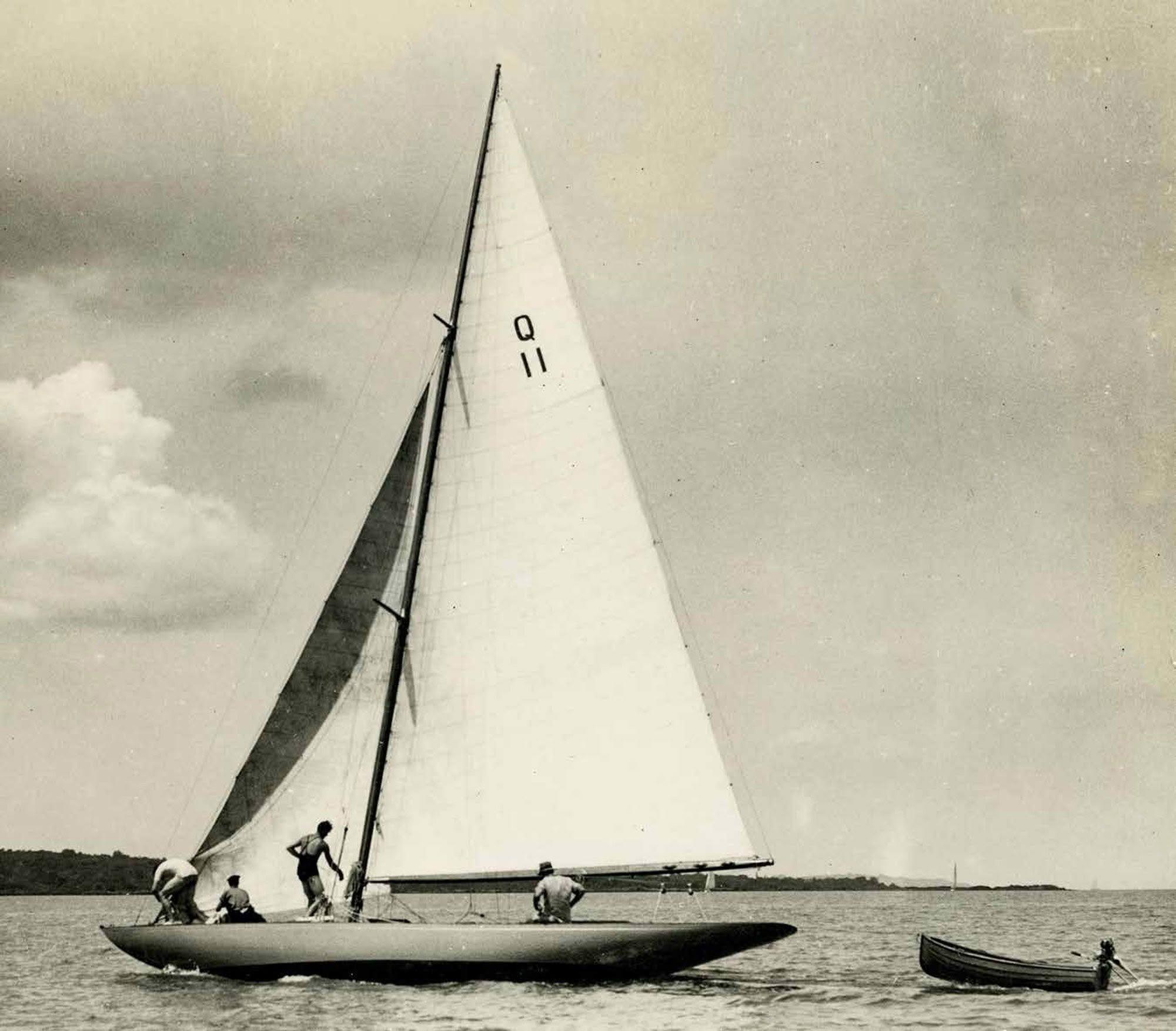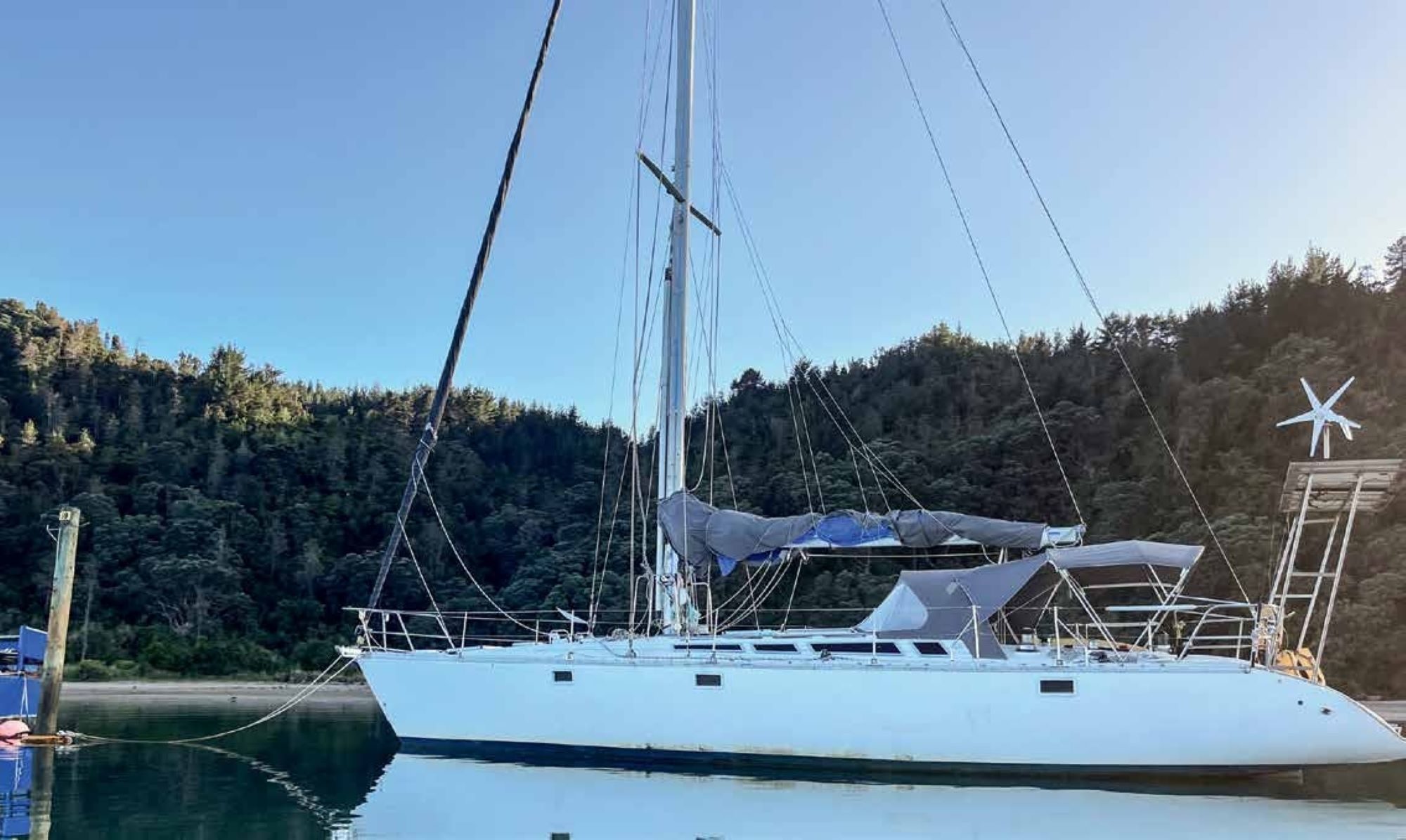

On land it is easy to forget about power and often we (particularly our teenagers) aren’t concerned about leaving lights on in unoccupied rooms, or leaving TVs, radios and games consoles switched on when they’re not in use.
But when you are not connected to an apparently unlimited supply of power (let’s say just a few hundred amp-hours of power), you quickly realise how precious it is and how careful you have to be.
When we bought SV Sauvage, she had her ‘original’ three lead-acid house batteries, each at 100 amp-hours (Ah), plus a dedicated battery for the engine. That meant we had 300Ah for running the internal filament lights, GPS, depth finder, windlass anchor, isotherm fridge and freezer, radio, and anchor light on the mast at night.
To get around the issue of having to start the motor to get more power into the house batteries, previous owners had installed a very small trickle-charging solar panel (40ish watts) for recharging during sunlight hours.

This set-up was okay if you didn’t want to go on a longer journey or you were happy to live a patient, unpowered life. On our first overnight excursion, much to our frustration, we discovered that 300Ah of lead-acid batteries actually delivered more like 100Ah of power (lead-acid batteries should not be depleted more that 50%, so only 150Ah available) and due to the age of the batteries, they were only about 70% healthy (leaving about 120Ah available). That is nothing with five people living aboard!
On our first few overnight excursions, we quickly ran into what can only be described as a first-world problem. We each have, at least, one electrical device used sporadically during the day, but mostly at night, and we simply could not generate enough power. Add to that, we knew we wanted to update our onboard electronics, which would need more power than we could give it.
And so, we started a number of projects. I tasked the kids with their own research to see how they could contribute to power savings. The answer: they should charge their devices during the day when we had the most charge and should not leave their lights on at night. We have also reached the conclusion that back-up lithium charging blocks/batteries would be useful at night after we ran out of charge in our devices. We leave all our charging for daylight hours.
My first project was to investigate alternatives to the original lead-acid batteries. Lithium-ion was the way to go: they offer the advantage of a faster charge and an increased usable capacity, while also being more tolerant to a partial charge than our lead-acid batteries. So, I bought and installed two 400Ah Lithium-ion batteries; this provided 800Ah all up. After a little bit of woodworking to increase the size of the original battery compartment, installation was a straightforward drop-in job.
Now that we had a whole lot more battery capacity, we needed the ability to charge them! The very old, humble 40W trickle-charging solar panel was useless for the job we needed. Again, it was time for more research. It was obvious that solar panels to collect the power generated by the sun was one part of the solution; the other part was a wind turbine to provide wind-generated power.
As the wind turbine was to be our secondary power generator, I had no particular specifications and purchased a 400W, 12V wind turbine (which we’ve since nicknamed ‘Spinny’) off TradeMe.


With the solar panels, I wanted to ensure we had redundancy in our solution, so that should one of the panels or controllers fail, we still had a working solution.
We purchased two 400W solar panels, each with its own Victron controllers (two panels, two controllers). Why 400W? My rationale was that they gave us a nice big battery charging capacity, possibly more than we needed, with a cost-effective cost per amp-hour.
While I worked out a solution for where to place the panels on Sauvage (and how), we had them sitting on the deck, but this was entirely impractical. The obvious answer was to commission a solar arch to mount off the back of the transom.
As no two boats are the same, we had our solar arch custom-built and fitted. I spent a bit of time talking to various solar arch design and installation companies, but after having spent more money than I had intended re-painting Sauvage and having her sit on the hard for a longer period of time than planned, I very quickly reached the conclusion that I didn’t want to re-break our bank account just to install one.
After much asking around, I found the team at Fabrication Specialists in Whangaparaoa, a custom stainless workshop, who proved excellent at helping me. From my requirements, they designed, built and installed a solar arch that housed the two solar panels and Spinny.
While I write this article, and six months after installation, I am currently reaching out to the Fabrication Specialists team again. Recently, after installing Spinny I find that we now need extra bracing to counter its spinning motion.
Given that the lights inside the boat, from the saloon to the cabins to the heads, were all old and power-hungry, swapping these out for more efficient lights seemed a no-brainer. The replacement project was easy. I found replacement LED lights designed to drop into the old filament light sockets at our local Burnsco. We saw immediate and significant power savings.

We also used a lot of power for the anchor light on the mast, so we replaced it with a very cool combo tri-coloured LED anchor light, which has proved much more energy efficient.
We also replaced the original fridge and freezer (another major project which we’ll talk about another time) with a new model that uses less power, but even so, we always use about 3Ah to maintain the cool temperatures required.
All-in-all, after dealing with the opportunities above, we have a good solution capable of powering our family through longer trips.
As a postscript, having now lived on the boat for longer periods of time, we are looking to further grow the battery capacity. We currently have 800Ah but now believe 1600Ah may be more practical for us. While we can conduct most of our high electricity usage activities during the day when power is coming thick and fast from solar, as soon as we get a few days of cloud we start to eat into our reserves. We can run low/run out of power within three days.
I intend Spinny to be a big part of our ultimate solution as well, but at the moment it is not working well with the Victron DC-DC Charger. The charger stops Spinny from putting power straight into the house batteries, a protective go-between if you like. But last time we were out on Sauvage, it sparked quite a bit and I had to turn it off to protect the batteries. So the output from Spinny is no longer being captured.
Back to the drawing board for a better solution – I will report back once I have some more time to get it working properly! BNZ





